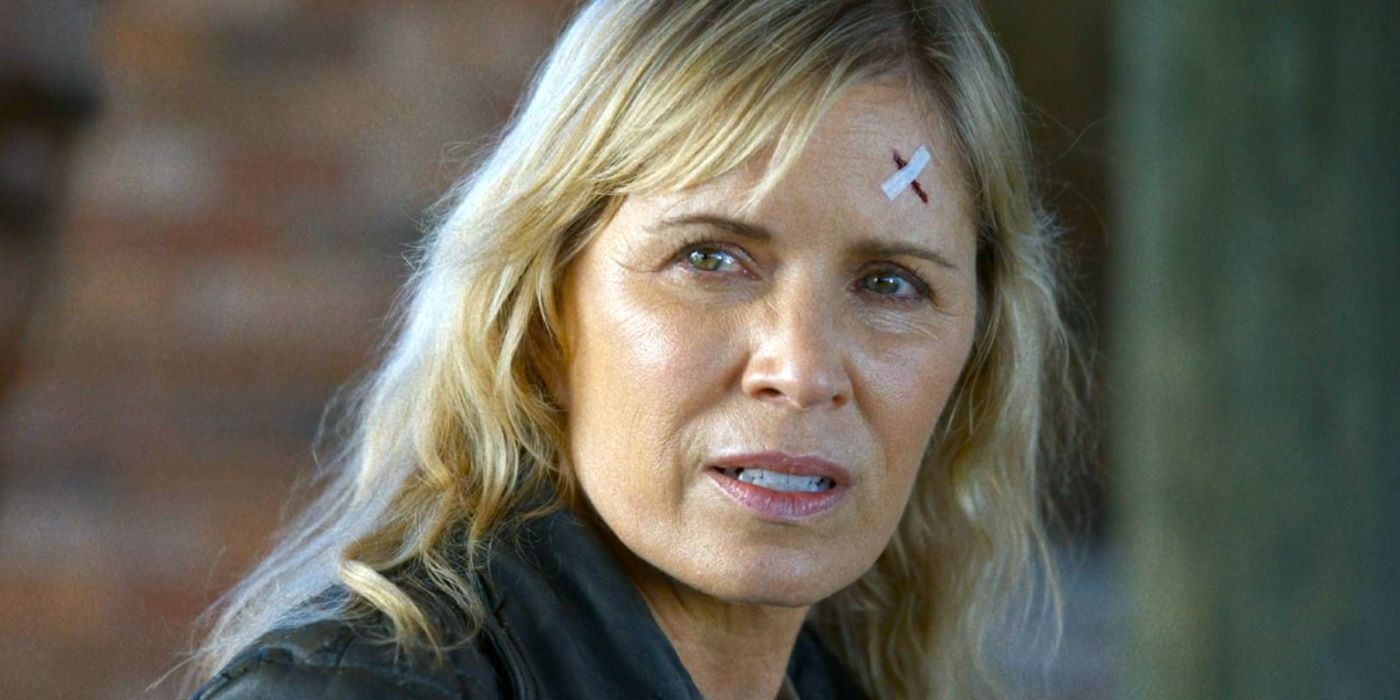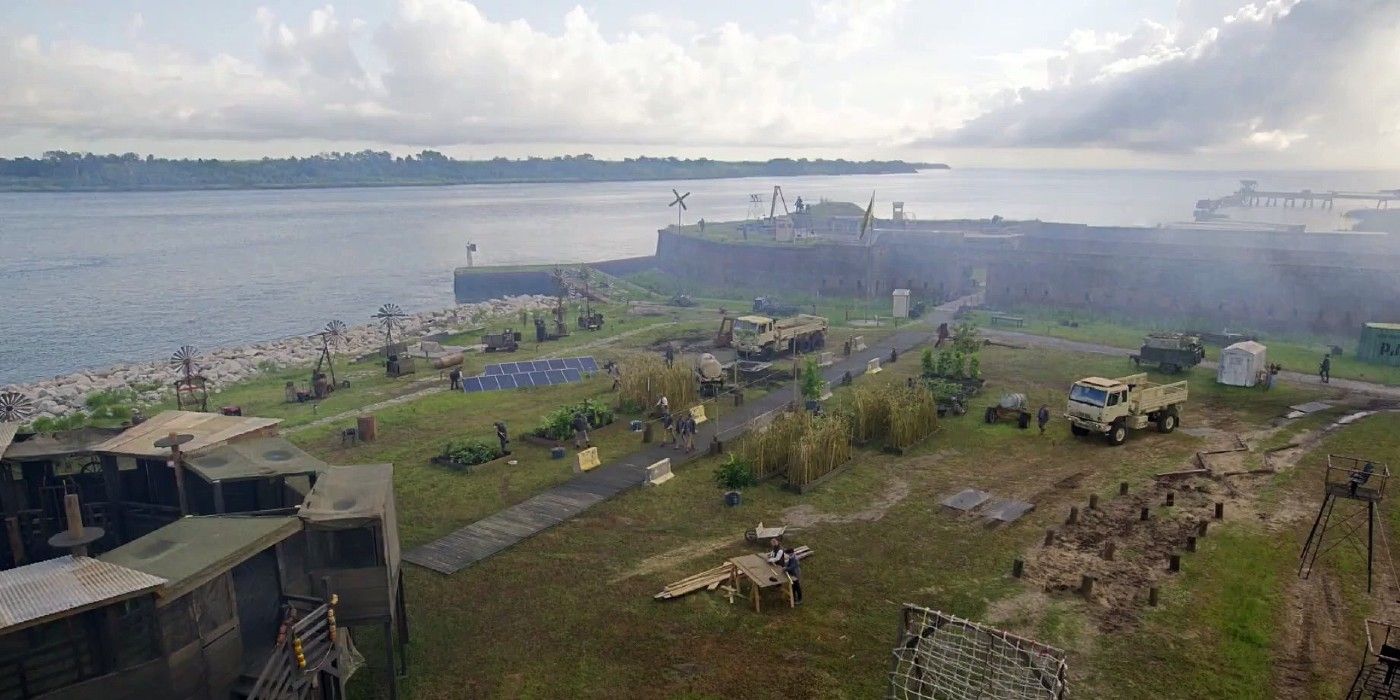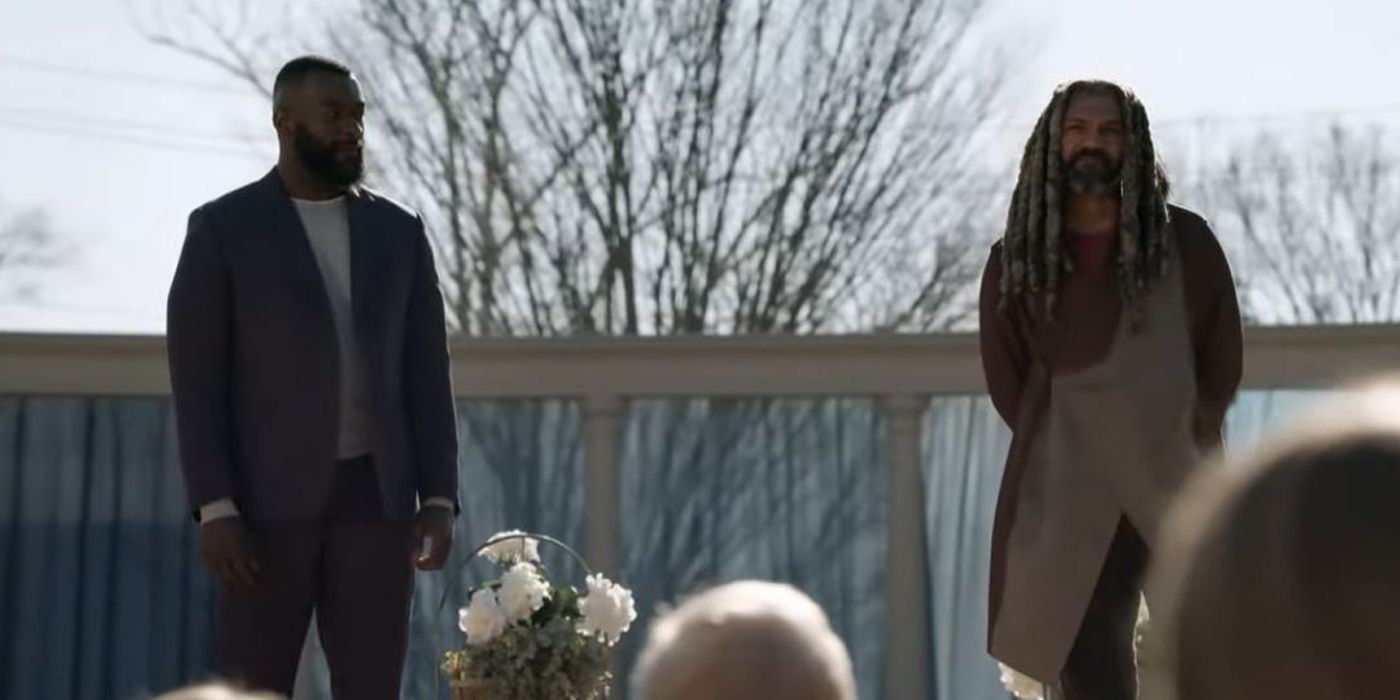How Fear The Walking Dead finale concludes the PADRE storyline successfully continues a satisfying community-related trend in the overall franchise.

Summary
- PADRE’s focus on separating children from their parents created a significant storyline in season 8 of Fear The Walking Dead.
- Much like other communities in the franchise, PADRE met a tragic ending, highlighting a recurring theme of destruction and rebuilding.
- The demise of PADRE allowed for character growth and the exploration of new opportunities, demonstrating the positive impact of a community’s downfall.
Warning: Spoilers for Fear The Walking Dead’s series finale.The Fear The Walking Dead series finale gave its final community PADRE an ending that continued one of the best trends in the franchise. Originally set up by the military as a safe zone, PADRE’s location was kept secret until Madison and Morgan got involved to save Mo and other children who were kidnapped and brought there. This development served as the basis for season 8’s entire story, as PADRE defined the arcs for both of its six-episode halves.
PADRE’s focus on keeping children away from their parents from a young age to avoid the pain of losing them later led to its change in leadership going into Fear the Walking Dead season 8 part 2. Much like previous communities encountered in the show, Madison and others managed to take over to turn PADRE into a haven for rebuilding. However, her plans ultimately ended in disaster in the Fear the Walking Dead series finale. Going in this direction allowed Fear the Walking Dead’s ending to mimic what the franchise previously pulled off a few times in the main series.
PADRE Meets The Same Fate As Other Communities At Fear The Walking Dead’s Ending

Following Troy Otto’s surprise return to Fear The Walking Dead, PADRE’s safety became questionable. Troy sought to take over PADRE to exact revenge on Madison for the destruction of his family’s ranch and her leaving him for dead in season 3. Despite being on an island and practicing secrecy around the location, PADRE’s defense was the focus in the second half of season 8. This failed and PADRE was destroyed, indicating a weakness in both Ben and Sam’s reign and Madison’s strategy.
Much like the trend of supposedly dead characters making shocking returns, communities falling and requiring rebuilding or relocation is typical in The Walking Dead. Like Strand’s Tower being burned down and Hilltop’s fire started by Whisperers, PADRE experienced an explosion started by Madison after Troy’s herd overran it. Moreover, walkers being used as a weapon against communities or herds invading is also nothing new. In Fear The Walking Dead season 3, Troy led a herd to the Ranch, ultimately destroying it. In The Walking Dead, a massive herd laid waste to Alexandria after the Wolves’ truck horn drew their attention to the community.
The Walking Dead Communities’ Bleak Endings Make Up A Satisfying Trend

While rebuilding fallen communities is common, it often leads to a satisfying trend because it enriches the franchise’s various narratives. Noted by the numerous spinoffs and seasons for some of the shows, communities’ destruction is often more a catalyst for survivors to pivot than be defeated. Shaking up the characters’ sense of security creates space for individual growth, such as the biggest moment in Fear The Walking Dead‘s finale episode. Madison led Troy’s walker herd to an underground, confined area of PADRE so Strand and the others could escape to safety.
The community-reinvention trend works because it’s flexible. For instance, the Commonwealth is a villainous group, but its downfall facilitated an alliance when Ezekiel took over governing the new Commonwealth with Mercer as lieutenant. Additionally, it can provide space for redemption, such as Dwight and Sherry’s plan to rebuild The Sanctuary for survivor parents to make it worthy of its name and cleanse it of the atrocities enacted by the Saviors. Fear The Walking Dead‘s ending leaving PADRE in ruins and using it to tease hopeful futures for its characters is a prime example of how the franchise continuously showcases the positive impact of a community’s demise.





